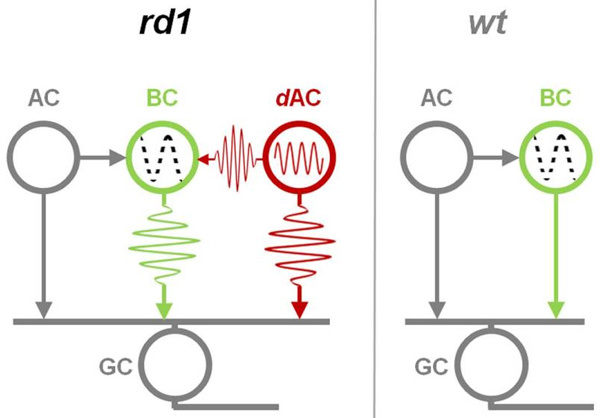This paper by Christopher W. Yee, Abduqodir H. Toychiev and Botir T. Sagdullaev examines the role that neural oscillations play in normal and pathological states. In a neurodegenerative model of retinitis pigmentosa, the authors examined the activity of neural networks in the rd1 mouse model and compared that activity to the wild type. The authors found that oscillatory activity varied considerably across different cell classes implying that some retinal networks are more substantially impacted by network changes and retinal remodeling than others. This is a concept that we proposed back in 2007 as a likely outcome of retinal circuit revision, so its really exciting to see some primary electrophysiological data that supports this. Essentially, Christopher, Abduqodir and Botir found that the aberrant oscillatory activity was driven by independent amacrine cells with intrinsic oscillators. The authors examined the rd1 retina at various stages of retinal degeneration and stimulated the remnant circuitry until they found an oscillating amacrine cell that corrupted normal visual processing. Of course this further complicates the retinal remodeling problem as it presents additional problems for vision rescue strategies based upon methodologies to introduce surrogate photoreceptors like bionic or biological implants.
We are very much looking forward to hearing Botir’s talk at the upcoming ISER meeting in Berlin and catching up to the latest out of his laboratory.
